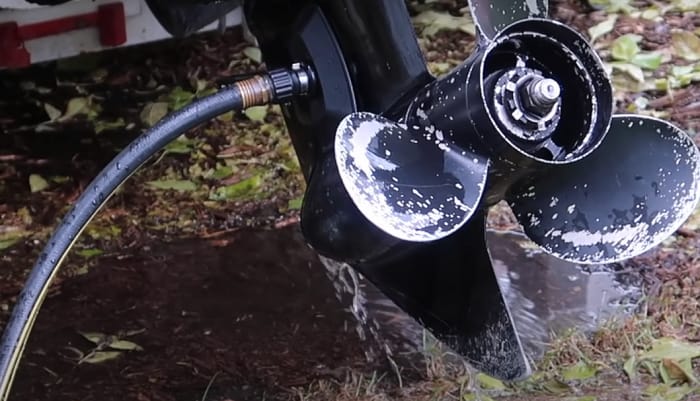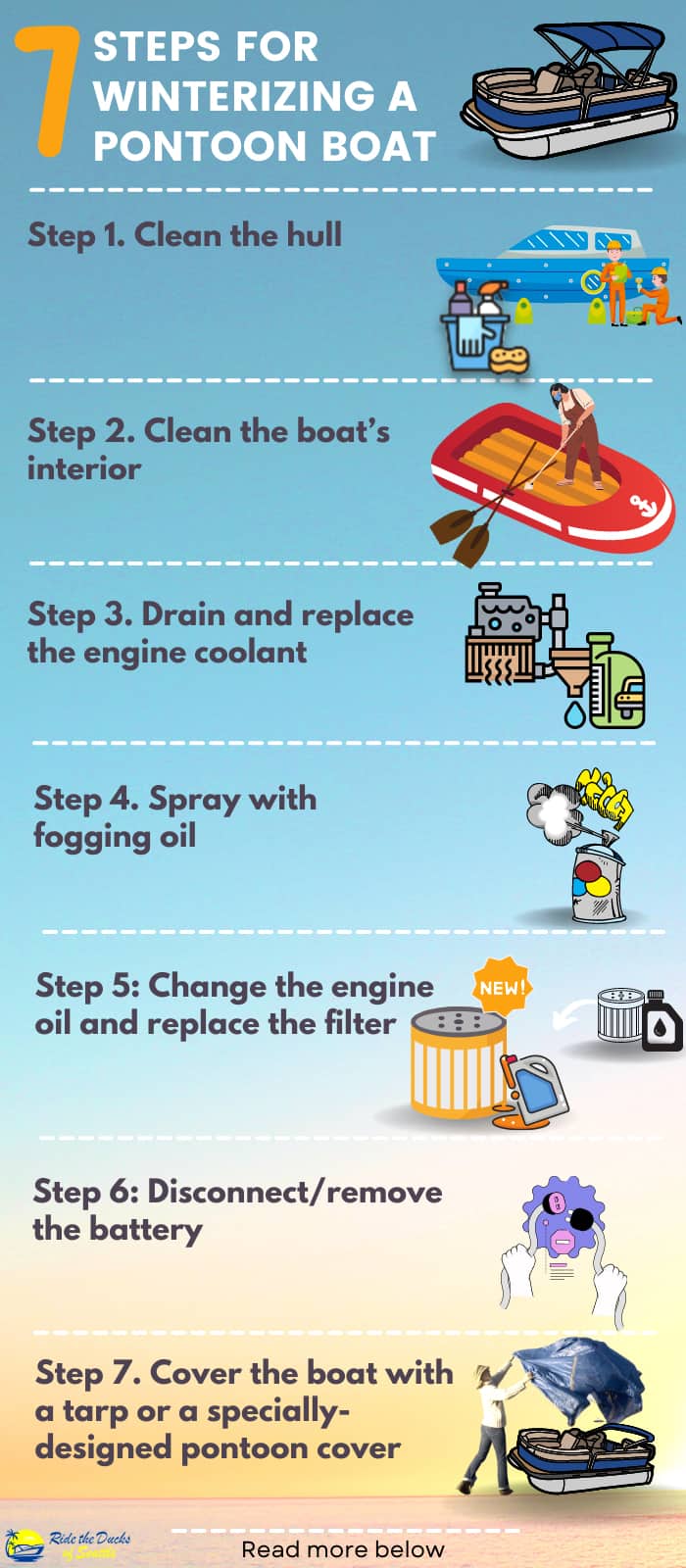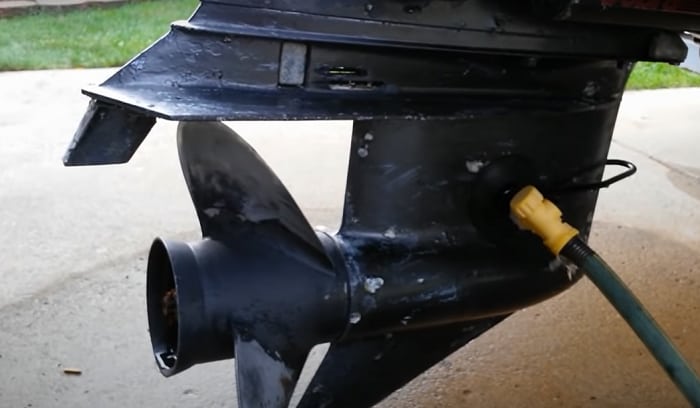Are you ready to store your pontoon boat for the winter? Knowing how to winterize a pontoon boat can get your watercraft ready for the next great adventure come spring.
Winterizing your pontoon boat keeps it in tip-top shape while you head to your winter quarters. When spring calls in, you will have an easier time prepping your watercraft for the different activities you have in mind.
If you are not confident about winterizing a pontoon boat, I outlined the steps and added pro tips to help you. From cleaning the boat, using antifreeze & fogging oil, to covering your vessel, this guide has it all.
Table of Contents
Things You’ll Need
You will need the following things to prepare your pontoon boat for the winter.
1. Owner’s Manual
You can read the manual for specific instructions on preparing your watercraft for storing in the winter season. The information in the manual can protect your investment if you adhere to it.
2. Winterizing Tools and Materials
A hull cleaner and boat polisher are a must-have when preparing to store pontoon boats during the winter season. You will also need a soft and stiff-bristled brush for removing dust grime, dirt, and other particles.
To winterize the engine, many boat owners recommend a non toxic propylene glycol based antifreeze. This product keeps the engine cooling system of boats clean and ready for next season.
A propylene glycol based antifreeze is also safer than ethylene glycol. At least, you will not discharge toxins into the water while ensuring your boat is in tip-top shape in cold temperatures.
Other materials and equipment you will use include a microfiber cloth, pontoon cover, pressure washer, fogging oil, engine oil and oil filter. A boat cover and shrink wrapping can also come in handy.
Steps for Winterizing a Pontoon Boat
Step 1. Clean the hull
Always clean the boat before storing your pontoon watercraft. The cleaning process also allows you to check if there is mold or any growth, which would otherwise lead to long-term issues.
Check for mussels, plants, and other debris, which could attach to your boat. Remove them now before you store your boat inside the shed instead of waiting for spring.
Wash the boat’s outer portion, including the pontoon tubes with freshwater. Use a hull cleaner if you find stains on the tubes. Do not forget to clean the bilge pump.
Use a stiff-bristled brush for tough stains. A microfiber cloth is often sufficient for cleaning the pontoon boat. It is gentle, soft, non-abrasive, and will never leave dust or lint on the boat’s surface.
Pro Tip: Avoid scrubbing too much, or it will ruin your bottom paint if your pontoon boat has any. To reduce corrosion, apply a polish beneath and on the sides of your pontoon.
Step 2. Clean the boat’s interior
Part of winterizing a pontoon boat is cleaning the interior. You can use an appropriate cleaning agent, letting it sit to work its magic.
Start by removing any water sports or fishing equipment, ladders, accessories, flotation devices, and other devices to prevent any mildew from forming during the winter.
In addition, remove installed equipment, such as depth finders, external audio players, and other electronically-operated appliances and accessories. Store them indoors to prevent theft, damage, and exposure to the elements.
Clean the cushions and the floor. Remove food crumbs, dirt, and dust with a mild polisher.
Let it sit and dry thoroughly to lower the risk of mold and mildew growing in the boat’s inside surfaces. It will also prevent any rodents and other pests from entering and making your pontoon their home come the winter.
Pro Tip: To prevent pest infestation, you can place traps in your pontoon boat. Alternatively, use natural pest repellent like peppermint oil mixed with water, and then spray in corners, cracks, and other places where mice and rodents can make their nest.
Step 3. Drain and replace the engine coolant
Check your manual again for specific instructions on how to drain the coolant. Most boat owners use a siphon or a manual pump to remove the solution. Some also apply compressed air to remove any remaining moisture.
Drain the coolant, and then fill the motor with a suitable antifreeze.
Step 4. Spray with fogging oil
Spray fogging oil into the carburetor and down to the spark plug holes. Take the spark plugs out, and then spray the fogging oil. Replace the spark plugs afterwards.
Remember to fill the gas tank at least 75% to reduce any space and temperature changes in the fuel tank. Having air in the gas tank can lead to condensation because air carries moisture.
Low temperatures can turn the moisture in the fuel tank into ice crystals, wreaking havoc in your boat and undermining your investment.
Switch off the valves, and then seal all the exhaust ports to reduce and eventually prevent moisture ingress and buildup.
Pro Tip: It is always a good idea to add a fuel stabilizer if your fuel has ethanol to prevent damage to your engine due to a buildup.
Step 5: Change the engine oil and replace the filter
A part of winterizing pontoon boats is engine winterization.
Pontoon boats have different engine models and specifications. The engine is also a sensitive component, so winterization steps should be specific to its brand and model.
Start by disconnecting the battery from the outboard engines. Drain your engine block based on the manufacturer’s direction for the inboard engines and outboard engines.
Close the port and fill the motor block with the correct lubricant.
Remove the engine oil filter, and replace it with a brand new filtration device.
Old oil filters can contain gunk that can freeze during the winter. You can protect your pontoon before storing by replacing the oil filter.
Step 6: Disconnect/remove the battery
This step is a straightforward process that does not require an associate’s program to execute.
If you wish to leave the battery onboard, it is especially important to disconnect the battery from the boat’s electrical system. Connect the battery to a trickle charger to prevent it from draining.
If you will remove the battery, fully charge it before storage in the garage or any place where the temperature can stay above freezing, such as a heated outbuilding or basement. Throughout the winter, ensure you charge it.
Step 7. Cover the boat with a tarp or a specially-designed pontoon cover
You can use a tarp or a specific pontoon cover which can handle temperature changes and wintery conditions. Ensure that the cover fits the boat and is easily expandable/contractible to prevent it from ripping.
If you find any holes, patch or repair them to prevent pests from entering. If the damage is severe, it would be ideal to replace the cover. It will also be wise to spray repellent on the cover.
Leaving your pontoon boat in the open can lead to a pooling effect, which can damage the cover. Find a pontoon cover with poles to prop the cover up to prevent water weighing down on it.
Alternatively, you can shrink wrap your pontoon to prevent leaks and water from pooling. You can find shrink wrap kits online and at marinas. I think a shrink wrapped boat is better than covering it with a tarp.
Conclusion
There, you have your easy steps on how to winterize a pontoon boat if you’re planning to do it yourself. Protect your boat, its components, and your equipment from damage by winterizing your pontoon and preparing it for winter storage.
Did you find this tutorial helpful? If you do, I would appreciate it if you can share this article with people you know. I would also love to hear any comments you may have.
Read more: Is fogging a boat motor necessary?

I am passionate about water sports and technical fields, so combining both makes me interested in making contents about boat accessories. With my partner, we went on many trips and sports games together, which led us to think about how we can spread our joys and passions to many people.




